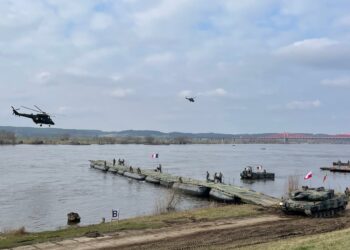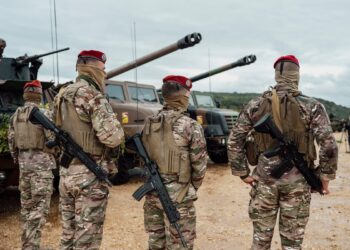The Army’s latest modernization effort took place on the training grounds of Hawaii from October 20, where soldiers tested a new mobile mortar system intended to enhance agility in combat. This system, known as the Scorpion Light 81mm mortar, was evaluated by members of the 35th Infantry Regiment over five days, as stated in a Wednesday news release by Global Military Products, a Florida-based company that manufactures the weaponry.
The testing was part of the Army’s Transformation in Contact 2.0 program, which aims to gather soldier feedback on experimental weapons and vehicles before they are mass-produced. James Knight, the senior manager of defense systems and energetics at Global Military Products, emphasized the importance of soldiers’ feedback, which validated the system’s capacity for rapid, highly mobile, precise, and survivable indirect fire.
During the trials, soldiers utilized Army “utility” Infantry Squad Vehicles designed for troop movement and rapid transport. Each vehicle can accommodate the mortar system and 72 rounds, allowing the Scorpion Light to fire eight rounds and relocate in under two minutes. The system is capable of firing its first round within 30 seconds and can displace quickly after firing, aided by a unique baseplate that allows for operation on nearly any surface.
The Scorpion Light mortar system can be integrated with third-party guidance and is lightweight enough to be transported inside a Chinook helicopter or sling-loaded beneath a Black Hawk helicopter. Two of these systems will remain in Hawaii and will be transported via a C-17 aircraft for participation in the Joint Pacific Multinational Readiness Center exercises scheduled for November.
This joint exercise will be led by the 25th Infantry Division and will take place across Hawaii and Luzon in the Philippines. Military personnel from several countries, including Singapore, Thailand, Malaysia, Maldives, France, and New Zealand, are expected to participate.
Additionally, the Scorpion Light has been assessed by the Marine Corps in Quantico, Virginia, and an earlier version of the system has seen use in combat in Ukraine. As of now, the Army has not made an official announcement regarding the adoption of the platform, and officials did not respond to requests for comment.
Reporter Eve Sampson, a former Army officer, has extensive experience covering conflicts globally and has contributed to renowned publications such as The New York Times, The Washington Post, and The Associated Press.













